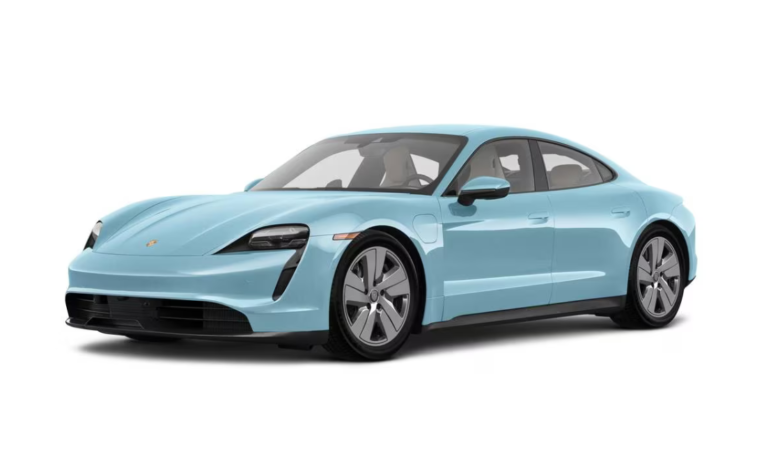
Years before it was introduced as a production model, the Porsche Taycan all-electric car created a stir when it debuted as the Mission E concept at the 2015 Frankfurt Motor Show. Despite having a higher price tag and a shorter range than competitors like Tesla, it debuted on the market for the 2020 model year with much excitement and swiftly rose to the top of Porsche’s sales charts in Europe. It’s excellent all-wheel-drive handling, reliable (and cutting-edge) electric drivetrain, striking appearance, and futuristic interior wowed buyers.
Since then, Porsche has released several Taycan models, including the standard rear-wheel drive model, three wagons, and the performance-focused GTS type. The Taycan lineup will see minor but significant changes for 2023, such as improved battery heat management and charging management, a redesigned powertrain strategy, wireless Android Auto compatibility, integrated Spotify connectivity, and minor changes to the infotainment system’s user interface and icons. Porsche has good reason to keep improving the Taycan assortment since more and more rivals are often entering the premium sedan market.
Despite Porsche’s four-door sports car mentality and Tesla’s more opulent touring sensibility, the Tesla Model S has always been the vehicle to which the Taycan is most often likened. All three of them follow more closely to the Tesla than the Porsche because, like the Model S, they offer more extended range, more interior room, and more upscale amenities than the Taycan, Lucid’s Air, Mercedes’ EQS, and BMW’s i7 are scheduled to come shortly. In light of this, the Taycan’s platform-sharing competition, the Audi e-tron, is perhaps Porsche’s closest competitor in terms of priority.
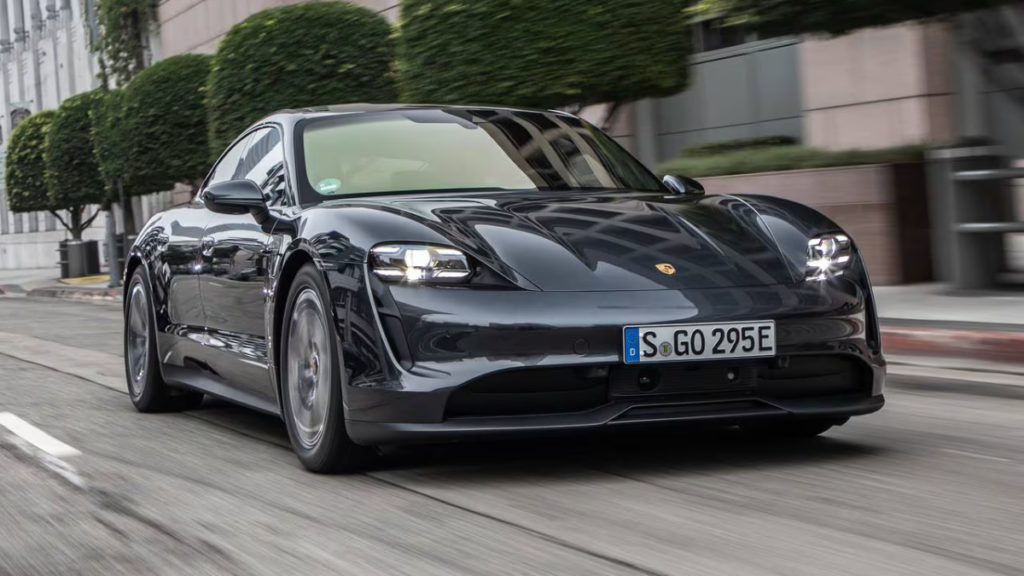
EV competition be damned, the Taycan is the driver’s vehicle. The Porsche’s unparalleled (and intangible) handling characteristics distinguish it from all other cars on the market and help explain why this less luxurious, more compact, and sometimes more costly sedan can stare down the Model S straight without flinching. There is a Taycan for everyone, whether it be the rear-wheel-drive base model, the popular 4S version, the all-around expert GTS version, or the practically unbeatable Turbo and Turbo S models (not to mention the slightly more realistic Sport Turismo and Cross Turismo wagon versions).
That is, everyone with a financial account between $88,000 and $192,000 before they choose from the extensive and pricey à la carte choices menu offered by Porsche. Although the Taycan’s interior spaciousness and swankiness may not rival its competitors, real sybarites will find more than enough features to satisfy their needs. The build quality is unmatched by its competitors; there is no road or wind noise, and the trio (or quartet) of displays’ technological edge blends well with the plush leathers and comfy seats. If the driver wants that, the Taycan also has a striking style for days.
The Taycan maintains Porsche’s confusing options system, which forces customers to upgrade the already expensive luxuries they probably expect from their car, such as safety and technological elements that ought to come standard on a vehicle with this price tag. Therefore, save more money for features like adaptive cruise control, power-folding mirrors, lane-keep assist, and a decent sound system.
What’s New
- more capacity to charge
- enhanced control over heat
- improved the powertrain strategy to, in certain circumstances, disconnect the front motor instead of doing so as in previous models
- Spotify integration and wireless Android Auto connection were added, and portions of the infotainment system’s layout and visuals were updated.
Pros & Cons
Pros
- The market’s best-handling mainstream EV
- Robust German-engineered
- drivetrain Innovative external design
Cons:
- Too many things that should be standard are only available as options
- smaller than any competitor
- What still has to be improved is the brake feel.
Performance: Porsche Taycan
The standard Taycan is a rear-wheel drive sedan with 321 horsepower when driven typically and 402 horsepower when activating the “over-boost” function for brief bursts of power. The maximum torque is 254 pound-feet. This vehicle has a single electric motor and a standard 79.2 kWh battery. The EPA estimates the range to be 200 miles; with an optional bigger 93.4 kWh battery, the content is increased to 225 miles. A unique two-speed automatic gearbox is used on every Taycan variant.
The Taycan 4 Cross Turismo wagon comes next with two motors and all-wheel drive. It has 375 horsepower (or 469 when utilizing the Overboost option). It has a bigger battery, 93.4 kWh. Two hundred fifteen miles is the range. The Taycan 4S increases power to enable two motors, 429 horsepower (522 with overboost), and an EPA range of either 199 miles (79.2 kWh battery) or 227 miles (93.4 kWh Performance Battery Plus).
The all-wheel-drive Taycan GTS sedan and Sport Turismo wagon are the newest models in the Taycan series, catering to performance-seeking customers who may not want to upgrade to a Turbo variant. These variants feature a range of trim and suspension tuning enhancements, increasing power to 509 horsepower (590 with overboost).
More power is added by the Taycan Turbo sedan and Cross Turismo variants, which have 616 horsepower (670 with overboost). According to the EPA, their range is 212 and 204 miles, respectively. Finally, 616 horsepower (750 with overboost) is available in the Taycan Turbo S sedan and Cross Turismo variants. According to the EPA, their range is 201 and 202 miles, respectively.
The excellent steering input enhances the sensation of direct connection with the road, which the Model S cannot match. Additionally, despite its 4,773-pound curb weight, the Taycan 4S seems lighter.
The brakes were the one aspect of the car’s handling that I found lacking: the pedal lacked the smooth, linear feel one would expect from a performance vehicle. Instead, it had an excessively artificial sensation, albeit drivers would eventually get used to it.
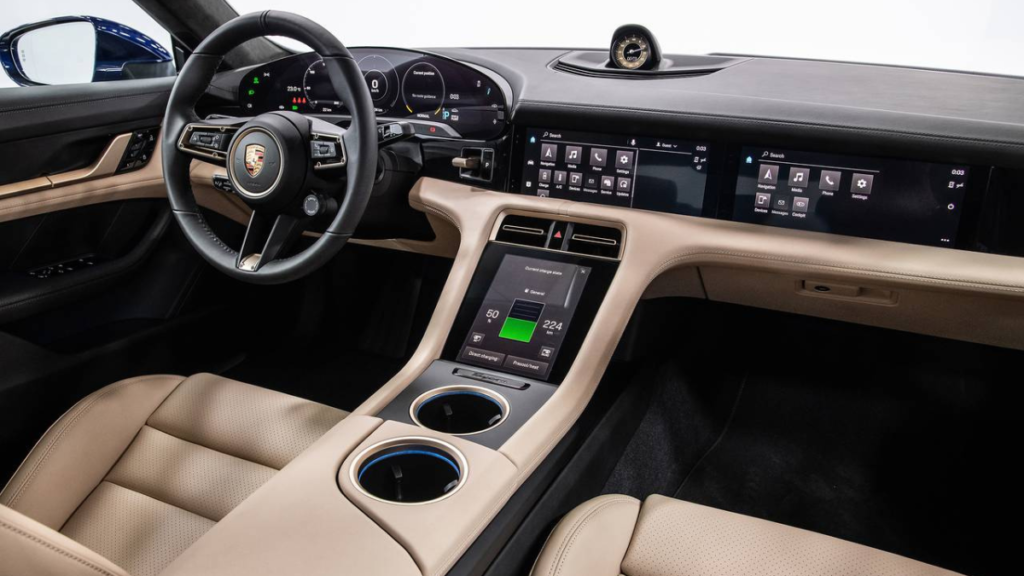
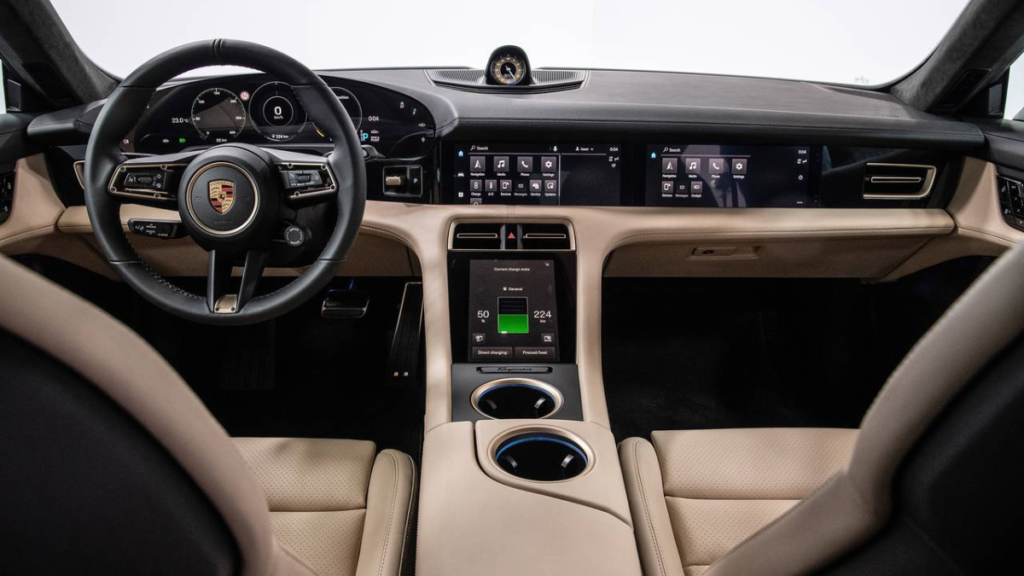
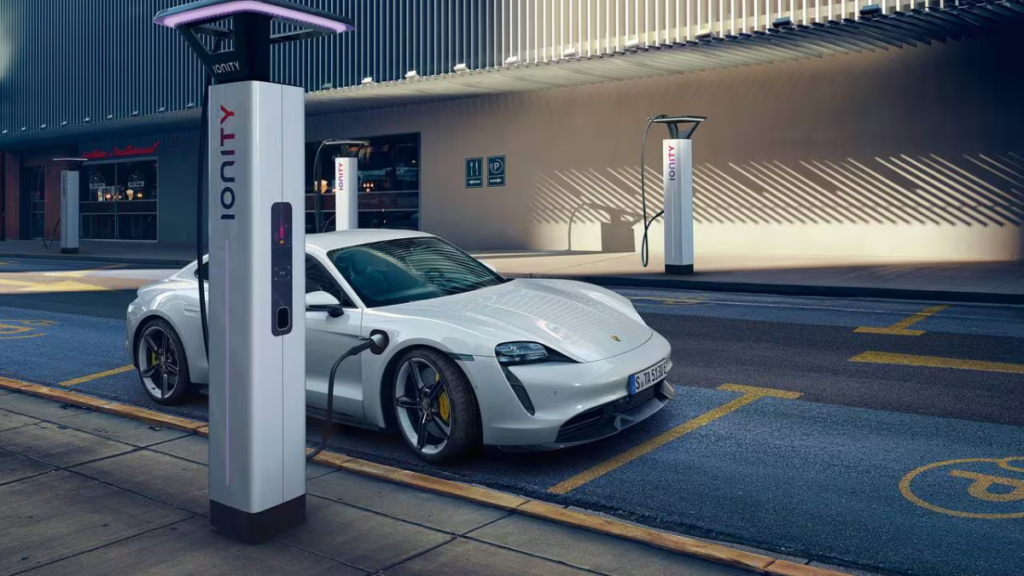
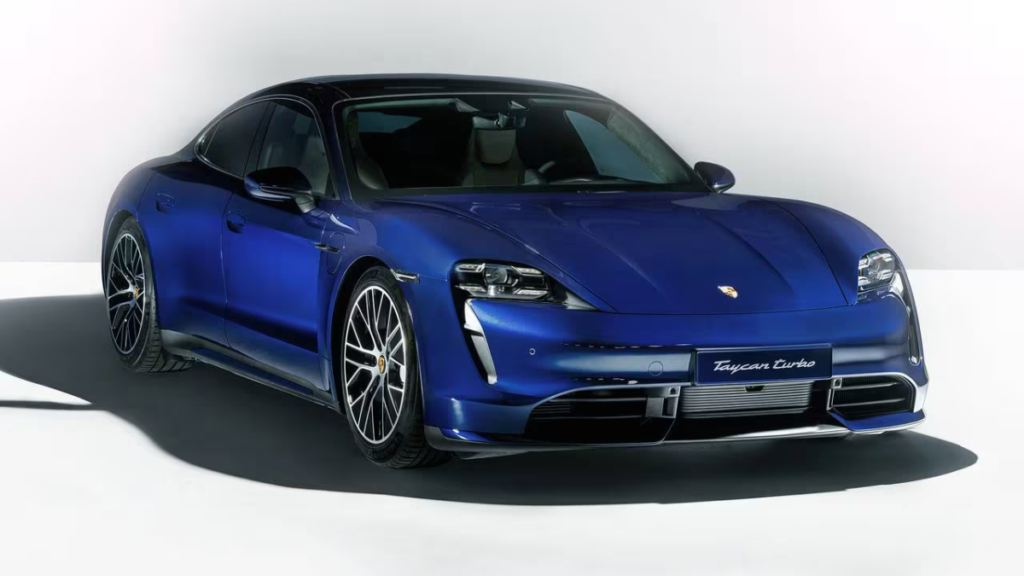
Power Consumption, Charging, and Range:
The EPA rates the Taycan 4S with the Performance Plus battery as having a 227-mile range on a single charge. The content is closer to 240 miles on a single account in real-world driving, and the Taycan gives an exceptionally accurate range estimate. Numerous electric vehicles still have difficulty precisely estimating their range, which varies depending on the driving conditions; in the Taycan, not at all.
When connected to a DC fast charger, the Taycan’s 800-volt design allows it to charge from a 5% battery to 80% in as little as 23 minutes. A 50 kW DC charging station will take 93 minutes to charge a battery from 5 to 80%.
Regretfully, the Taycan’s range is far less than that of the Lucid Air Dream (471 miles) and the Model S (405 miles). Lucid’s Air includes an 800-volt configuration, which enables rapid charging, much like the Taycan. Such a system is not present in Tesla’s Model S and is not anticipated to be added very soon.
Driver assistance and safety:
Neither the National Highway Traffic Safety Administration (NHTSA) nor the Insurance Institute for Highway Safety (IIHS) have assessed the crashworthiness of the Taycan. The Euro NCAP gave the Taycan five stars out of five. Front and rear parking sensors, as well as lane keep assist, are standard on the Taycan.
Adding more active safety measures as options on cars that typically cost tens of thousands of dollars less than the Taycan is necessary. These include lane change assist ($950), 360-degree parking camera ($1,200), and adaptive cruise control ($2,050).
Coziness & Space: Porsche Taycan
The Taycan has four seats as opposed to conventional sedans’ five, and while the inside of the vehicle seems cramped from the outside, it is surprisingly comfortable. Taller passengers can also comfortably sit in the rear seats, and a rear-facing car seat may be installed in the back without shoving the front passenger’s heart into the dashboard.
The glass roof, which expands the Taycan’s cabin and gives it a more airy feeling, is a crucial choice. However, in terms of interior size, the Taycan pales compared to the EQS, Model S, and Lucid Air premium electric sedans.
The seats were excellent; they were well padded to keep you in position during intense driving and solid without harshness.
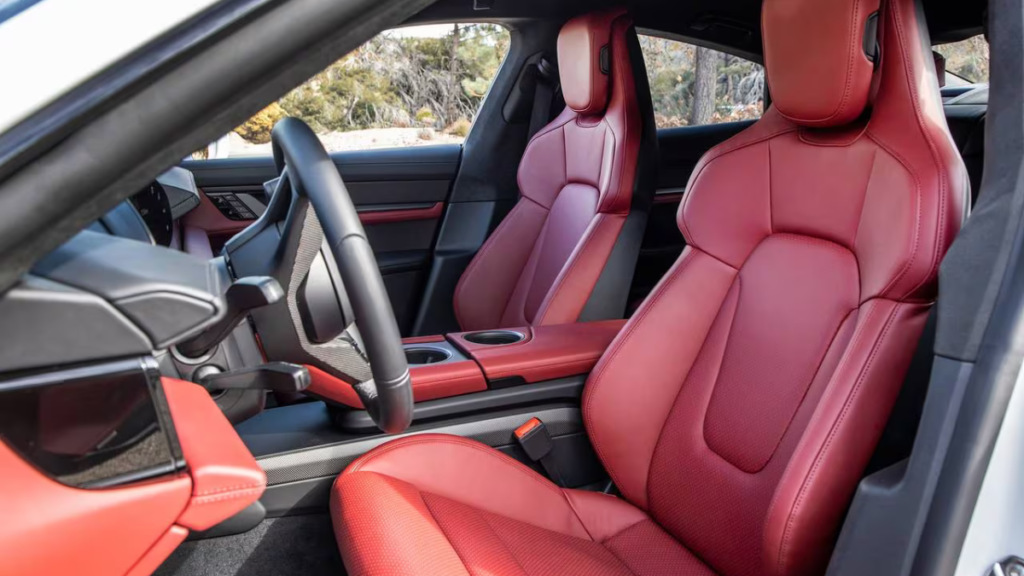
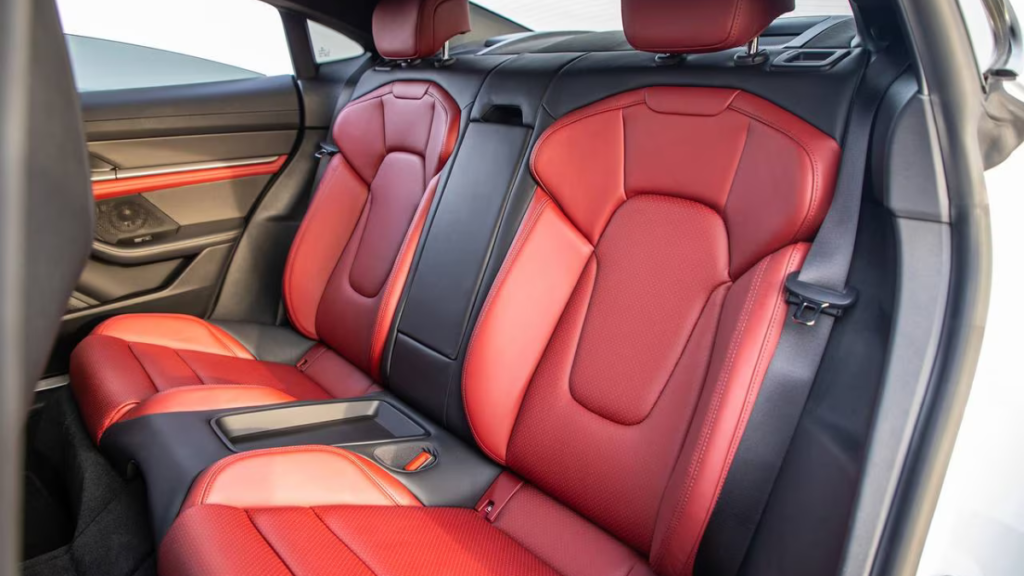
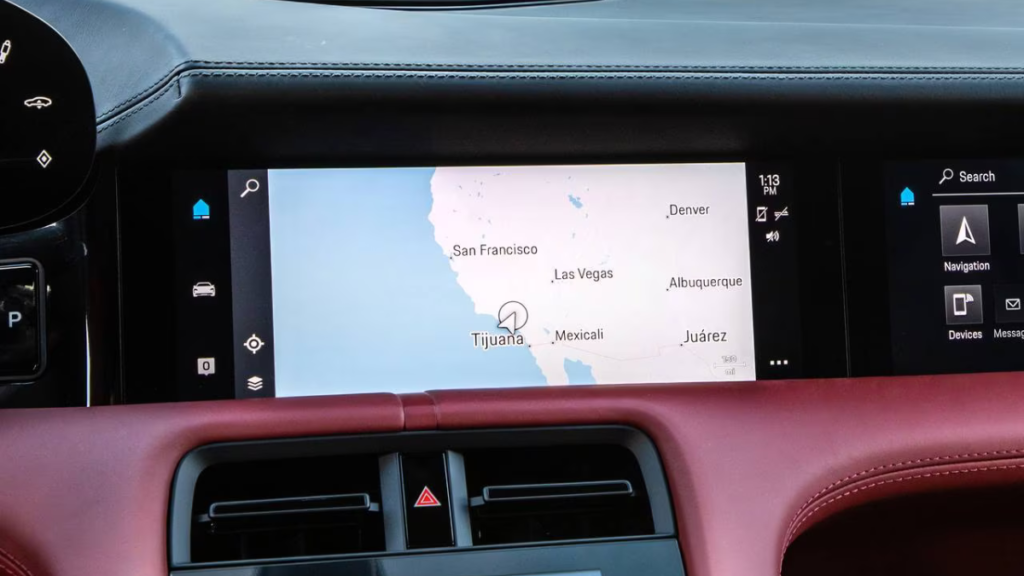
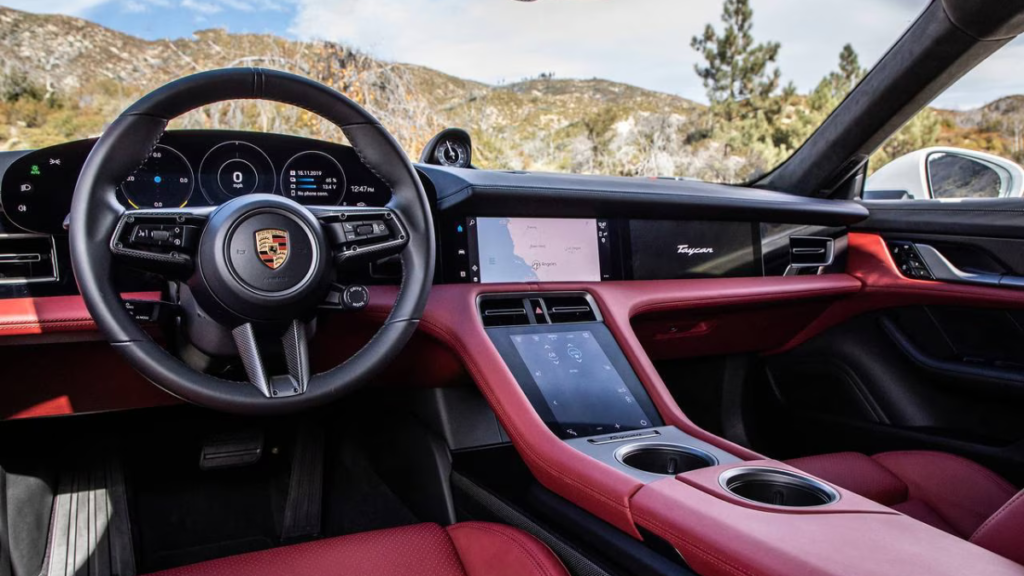
Infotainment: Porsche Taycan
Three displays that show and manage the Taycan’s functionalities are the focal point of the interior design. The instrument panel for the driver is a 16.8-inch curved screen surrounded by a modest set of tactile buttons.
The trip computer, music controls, ADAS function, performance statistics, and full-map setup with the navigation system are just a few of the configuration options available to drivers for this display.
An 8.4-inch digital panel underneath the primary 10.9-inch infotainment screen in the middle of the dashboard controls several infotainment and temperature control features. This lower screen has replaced Most of the Taycan’s cabin buttons and works well. An extra part of the screen is a faint haptic feedback that verifies you’ve touched the desired control.
Purchasers of Taycans can install a fourth screen in front of the front passenger on the dashboard for an additional $1,100. The passenger may operate several of the car’s music and navigation systems via this 10.9-inch device. Porsche expanded the Taycan’s wireless Apple CarPlay system to include a wireless Android Auto connection for 2023.
Additionally, the Taycan has two USB-C ports in the front of the vehicle and another pair in the back of the seats. A wireless smartphone charging station is between the two front seats in the center console.
Storage & Cargo Space:
Plan (and pack) appropriately since, as one would assume from looking at it, cargo capacity is not the Taycan’s strong suit—not even the wagon variants provide enough cargo room. The front trunk of the Taycan sedan has 2.9 cubic feet of storage capacity, while the rear compartment has 14.3 cubic feet. The rear load capacity is increased to 15.8 cubic feet in the Cross Turismo and Sport Turismo wagon variants.
These numbers pale compared to the Model S’s 3.1 cubic feet in the frunk and 25 cubes in the trunk (the Model S is a hatchback, so it will naturally have more room), listed in the owner’s handbook.
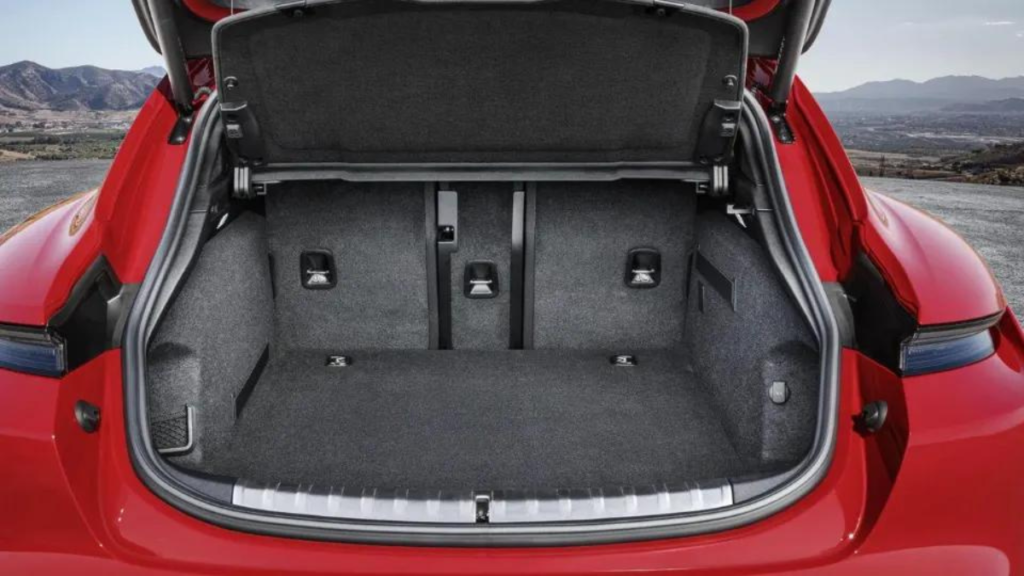
Design: Porsche Taycan
When Porsche unveiled the Mission E in 2015, the elegant, four-door concept car was said to provide a sneak peek into the company’s future electric intentions. Porsche unveiled the production Taycan as a 2020 model only four short years later. As it happens, Mission E was much more than just a hint—instead, it was a Taycan that was almost ready for production that was lying in wait.
The Taycan is not just blatantly futuristic but also has one of the most distinctive looks on the road. When spending more than $100,000 on a vehicle, you want to make a statement, and this one will leave no room for doubt. Considering the company the Taycan maintains, it is a good thing. The Lucid Air showcases another distinctive sedan design, while the Tesla Model S has aged better than most other vehicles now on the road.
The Taycan’s interior exudes robust construction and Germanic attention to detail. Porsche sets the standard for electric vehicle building with the Taycan and everything else in its portfolio. In contrast, Tesla and other up-and-coming EVs may find it challenging to match the quality of construction of its more established competitors.
Is the 2023 Porsche Taycan Worth it?
Since no Taycan is inexpensive, numerous features and conveniences that are often standard—even on vehicles half as expensive as this Porsche—must be added. As a result, the introductory price of any Taycan model rapidly soars when even little extras are added.
A basic rear-wheel-drive Taycan ($86,700) or a modestly optioned 4 Cross Turismo or 4S ($107,950) will still offer you all of the glitz and virtually all of the thrills of the higher-end versions. Still, you can save tens of thousands of dollars if you exercise a little restraint at the showroom.
The 4 Cross Turismo ($99,150 for 469 horsepower and the much-appreciated extra cargo space) is a wise purchase when paired with either the Premium Package ($5,930 for ventilated 14-way power seats, lane-change assist, a 360-degree parking camera, power-folding mirrors, and Porsche’s opulent Dynamic Lighting System) or the Technology Package ($5,300 for that fourth interior screen, a head-up display, remote park assist, lane change assist, and adaptive cruise control).
Choose the $135,000 GTS sedan instead, which comes with 590 horsepower, the most significant drag coefficient of the Taycan family, unique suspension and engine calibrations, sharper front bumpers, and a fun factor similar to that of the Turbo (plus the Turbo’s rear motor and power inverter).
You won’t need or desire more Performance than what the 4S sedan and wagon versions provide, so there’s no need to shell out the extra cash for a Turbo model. In addition to its lightning-fast acceleration (3.8 seconds from zero to sixty mph, according to Porsche—though these times are often conservative—this model also stands out from its more potent rivals thanks to its handling.
The Taycan has a sensation akin to that of a $100,000 car: the doors shut with a loud thud; there is no wind noise or road noise, and sharp potholes hardly register when you strike them head-on.
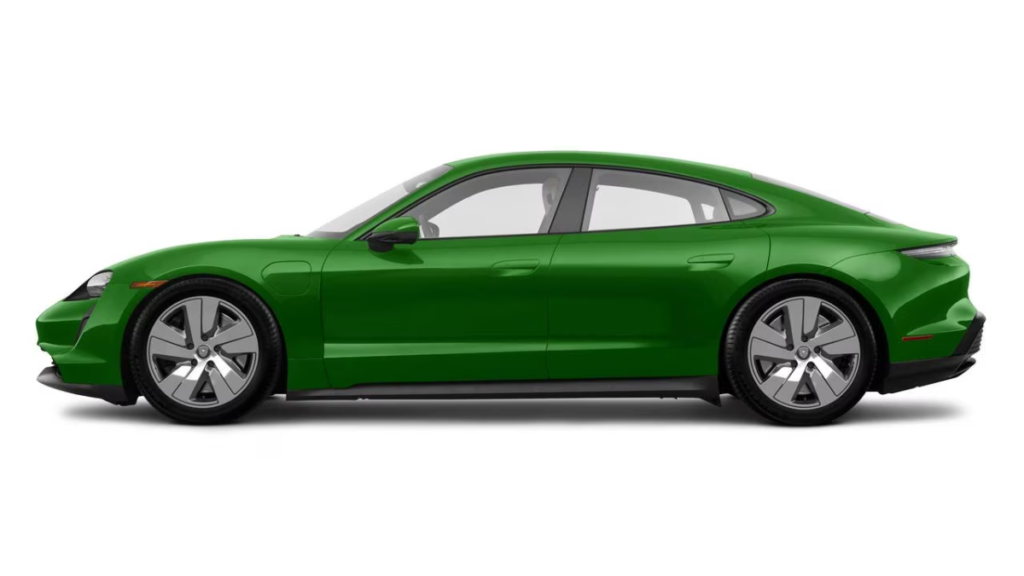
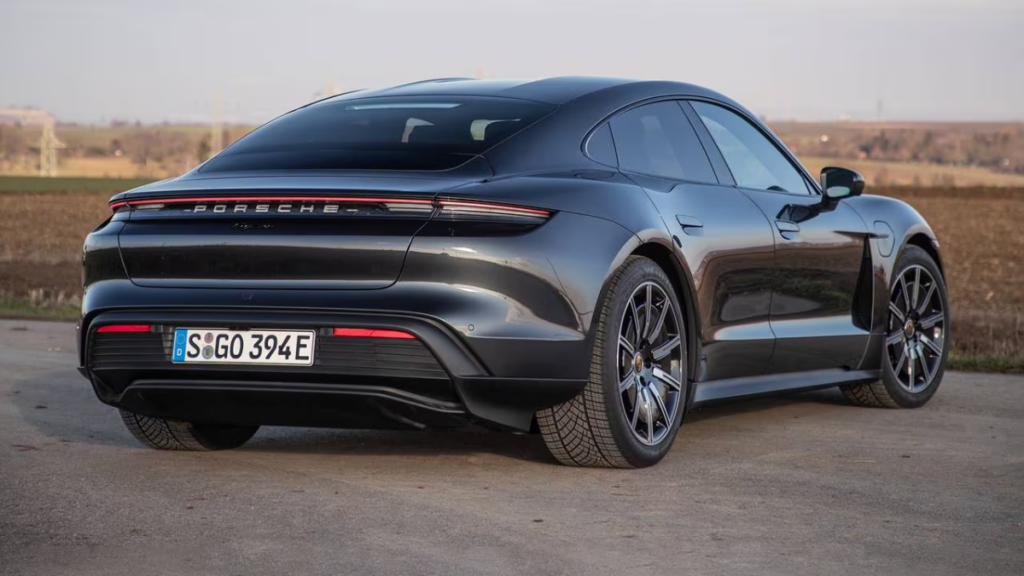

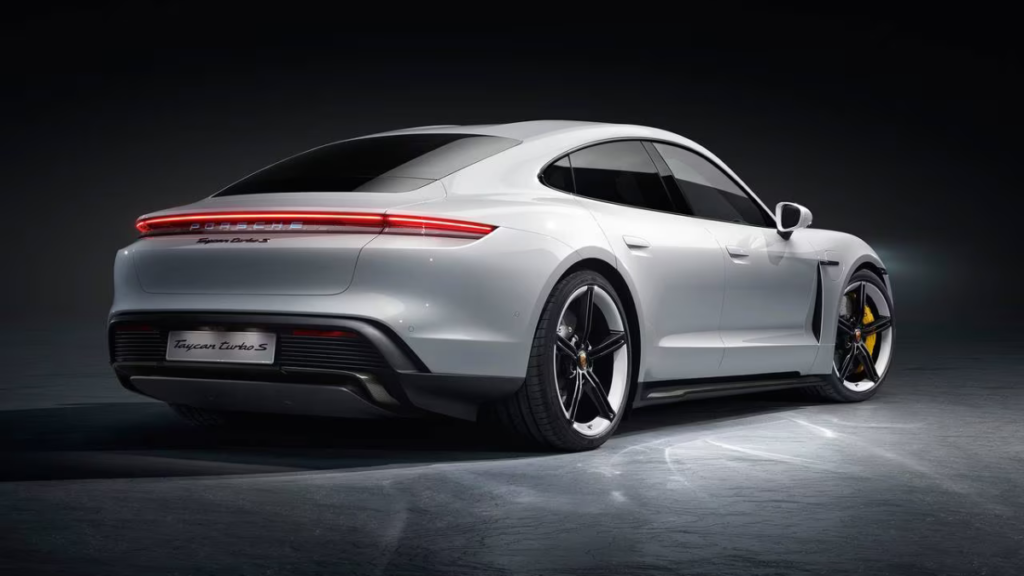
How Much Does Porsche Taycan Insurance Cost 2023?
Insurance for the Taycan is pricey, but so is coverage for similar vehicles. Depending on the version, a 30-year-old female driver with a spotless record should anticipate paying an average yearly premium of $3,814 to $6,534, albeit this average applies to all 50 states. The annual cost of a Lucid Air might be as high as $4,000 when the Tesla Model S Plaid costs $5,468, and the Audi RS e-tron car costs $5,939.
Porsche Taycan Generations
First Generation
2020 to Present
The Taycan debuted in 2020 and is Porsche’s first all-electric production vehicle. It draws on the company’s earlier high-performance hybrids, such as the 918 Spyder hypercar, and its most powerful Turbo S model delivers equally fantastic Performance. The Taycan, designed by Mitja Borkert, who would go on to lead Lamborghini’s design division, combines many classic Porsche characteristics while reinterpreting them in novel ways. The Turbo and Turbo S trim levels refer to the highest-performance models even though the vehicle is all electric and lacks physical turbos.
Verdict
The Taycan is an electric vehicle that is a genuine Porsche. It blends remarkable comfort and build quality with ground-breaking Performance and longevity. Customers may choose from various engine strengths and sedan or wagon body types to find the ideal fit. Although the Taycan models’ battery range isn’t as long as a Tesla Model S or a Lucid Air, it’s still respectable considering the vehicle’s limitations, and quick charging possibilities are also helpful. But at a price, this is the driver’s EV rather than sheer range.




